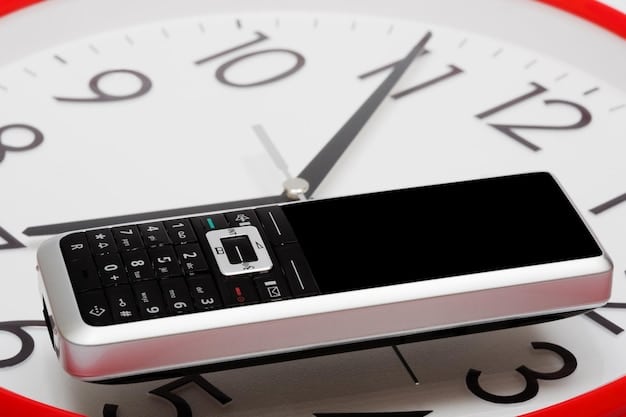Binge-Watching Speed: How Long Does It REALLY Take?

Unraveling the true duration of a binge through a series encompasses more than just episode runtimes, involving factors like series length, viewer habits, and the intrinsic narrative pull of the content itself.
Ever wondered, “From Start to Finish: How Long Does It REALLY Take to Binge my favorite show?” It’s a question that plagues many a weekend planner and couch potato alike. The answer, as you’ll discover, is far more complex than a simple glance at episode counts.
The Allure of the Binge: Why We Can’t Stop
Binge-watching has evolved from a niche activity to a global phenomenon, reshaping our entertainment consumption habits. The ability to consume an entire season, or even an entire show, in a single sitting or over a concentrated period, offers a unique immediate gratification that traditional linear television could not provide.
But what drives this compelling urge to watch “just one more episode”? It’s a multifaceted combination of psychological triggers and narrative design. Cliffhangers, character development, and intricate plot lines are carefully crafted to create a continuous loop of suspense and satisfaction, encouraging viewers to keep pressing ‘next episode’ rather than pausing.
The Psychological Hooks
Our brains are hardwired for narrative. When a story captivates us, our desire to know what happens next becomes almost instinctual. This is particularly true for well-written series that employ serialized storytelling, where each episode builds directly on the last.
- Narrative Momentum: Each episode ends on a high note, or a dramatic reveal, making it difficult to disengage.
- Character Investment: As viewers spend more time with characters, they develop emotional connections, leading to a natural curiosity about their fates.
- Escapism and Immersion: Binge-watching allows for deep immersion into fictional worlds, offering a temporary escape from daily routines and stresses.
The sense of achievement after completing a long series can also be a motivator. It’s a modern form of conquest, a mountain climbed, albeit from the comfort of a sofa.
The Role of Streaming Platforms
Streaming services like Netflix, Hulu, and Amazon Prime Video have been instrumental in normalizing and facilitating binge-watching. Their entire interfaces are designed to streamline the process, with auto-play functions and personalized recommendations that minimize friction between episodes. This frictionless experience removes the traditional wait times, making uninterrupted viewing a default expectation.
The vast libraries available mean that viewers are rarely at a loss for something new to dive into, further fueling the cycle of continuous consumption. The ease of access, combined with the affordability of these services compared to traditional cable, makes the allure of the binge almost irresistible for many.
Defining “Binge”: More Than Just Duration
Before we calculate how long it takes, it’s crucial to define what “binge” truly means in the context of television consumption. While often associated with watching an entire series in one sitting, the reality is more nuanced.
Academically, binge-watching is typically defined as watching multiple episodes of a television program in one sitting. However, this definition varies widely among individuals. For some, it might mean two episodes back-to-back, while for others, it implies a multi-hour marathon.
Variations in Binge Behavior
The concept of a “binge” isn’t a one-size-fits-all metric. It’s heavily influenced by personal habits, available time, and even the genre of the show. A comedy series with shorter episodes might be binged much faster than a dense drama with lengthy episodes.
Consider the difference between a “casual binge” over a weekend versus an “intensive binge” that might span an entire day or night without significant breaks. The intensity and duration of the viewing session greatly impact the perceived experience and the actual time commitment.
- Casual Binger: Watches 2-4 episodes in one sitting, perhaps over an evening or a lazy afternoon.
- Weekend Warrior: Dedicates an entire weekend to consuming a season or two of a show.
- Marathoner: Pushes through an entire series, or a significant portion, in a single, extended viewing session, often spanning 12+ hours.
The societal shift towards personalized entertainment has also played a role. Viewers are no longer beholden to broadcast schedules, allowing for unprecedented control over their viewing habits. This freedom to watch what you want, when you want, has blurred the lines of what constitutes a “normal” viewing pattern versus a “binge.”
The Math Behind the Marathon: Calculating Actual Binge Time

Calculating the actual time it takes to binge a show isn’t just about multiplying episode count by average runtime. Several factors can significantly alter the total duration, making the “from start to finish” calculation a bit more intricate.
The most straightforward method is to multiply the number of episodes by the average episode length. For instance, a series with 10 episodes, each 50 minutes long, would technically require 500 minutes (or 8 hours and 20 minutes) of pure viewing time. However, this simplistic calculation often overlooks crucial elements.
Factors Influencing Real Binge Duration
The ideal, uninterrupted viewing time is rarely the reality. Breaks, intros, outros, and even technical glitches add up. Here’s a breakdown of what truly impacts your binge time:
- Episode Length Variation: Not all episodes are created equal. Pilot episodes might be longer, finales shorter, or vice versa. An average can be misleading if there are significant outliers.
- Intros and Outros: While many streaming services allow you to skip intros and jump credits, if you consistently watch them, they add minutes to hours over a full series.
- Auto-play Delays: The brief pauses between episodes on auto-play can accumulate. Even a 5-second delay becomes a noticeable chunk of time over 50 episodes.
- Commercials/Ads: While less common on premium streaming, some services or older content might include commercial breaks, extending the overall viewing time.
- User Breaks: This is perhaps the most significant variable. Bathroom breaks, snack runs, checking social media, sleeping, or even just stretching, all pause the “pure viewing” clock.
Consider a show like “The Office” (US version), which has 201 episodes. If each episode averages 22 minutes (excluding commercials), that’s a total of 4,422 minutes, or approximately 73.7 hours of pure viewing. Add in intro/outro time, and even fleeting breaks, and that number can easily swell.
The “Netflix Skip Intro” Effect
Features like “Skip Intro” and “Skip Recap” are designed to make bingeing more efficient. While individually they save mere seconds, over an entire series, especially one with many episodes, these features can shave off significant chunks of time. This highlights how platform design directly impacts the perceived and actual duration of a binge. For a show with 60 episodes, skipping a 40-second intro can save 40 minutes – enough time for almost two extra episodes!
The Binge-Worthy Series Landscape: What’s Hot and How Long It Takes
The landscape of binge-worthy series is constantly evolving, with new shows emerging and old favorites sustaining their appeal. Understanding the typical length of these popular series can offer a glimpse into the time commitment required.
From procedurals with hundreds of episodes to limited series designed for a one-sitting consumption, the variety is immense. This section explores some benchmark examples and their approximate binge times.
Popular Binge Categories and Their Impact on Duration
- Sitcoms/Comedies: Often have shorter episodes (20-30 minutes) and many seasons. Shows like “Friends” or “The Office” can run into hundreds of hours. For example, “The Office” with 201 episodes at ~22 min/episode is over 73 hours of content.
- Dramas/Thrillers: Typically have longer episodes (40-60 minutes) but fewer seasons. “Breaking Bad” (62 episodes at ~47 minutes/episode) is around 48 hours. “Game of Thrones” (73 episodes at ~57 minutes/episode) clocks in at over 69 hours.
- Limited Series/Miniseries: Designed for self-contained viewing, these are usually the quickest to binge. “Chernobyl” (5 episodes at ~60 minutes/episode) is a brisk 5 hours. “The Queen’s Gambit” (7 episodes at ~55 minutes/episode) is roughly 6.5 hours.
The genre often dictates the episode structure and overall series length, which directly impacts the total time. A show reliant on quick-fire jokes like a sitcom naturally lends itself to shorter episode formats, while a complex drama requires more time to develop plots and characters within each installment.
Moreover, the availability of a full season or series ‘Dropped’ all at once by a streaming service, as opposed to a weekly release, significantly influences binge patterns. The instant availability encourages rapid consumption, allowing viewers to set their own pace.
Mastering the Art of the Binge: Tips for Efficiency and Enjoyment
Binge-watching can be an incredibly rewarding experience when approached strategically. It’s not just about speed, but also about maximizing enjoyment and minimizing fatigue. Planning and pacing are key to a successful binge session that leaves you satisfied, not drained.
While the goal might be to watch “from start to finish,” rushing through a series can detract from the experience. A balanced approach ensures you absorb the narrative, appreciate the nuances, and avoid burnout.
Pre-Binge Preparation
A successful binge often starts before the first episode plays. Just like preparing for a long journey, a little foresight can vastly improve the experience.
- Snack and Drink Stockpile: Ensure easy access to refreshments to minimize breaks. Hydration is key!
- Comfort is King: Set up your viewing environment with blankets, pillows, and comfortable seating to avoid discomfort.
- Minimize Distractions: Silence notifications, dim lights, and inform housemates of your intentions to prevent interruptions.
- Check Series Length: A quick IMDb or Wikipedia check can give you an estimate of the total time commitment, allowing you to gauge if it’s a weekend or a multi-day endeavor.
Having everything ready allows for greater immersion into the show’s world, preventing those frustrating pauses that remind you of the real world.
During the Binge: Pacing and Breaks
Even the most dedicated binge-watchers need to take breaks. Strategic pauses can enhance the experience by preventing eye strain, physical stiffness, and narrative fatigue. It’s about quality over sheer quantity.
Instead of forcing yourself through episodes, consider natural breaking points. The end of a season, a particularly intense episode, or a logical narrative arc can be excellent moments to stretch, grab a fresh snack, or briefly step away from the screen.
- The “One Episode Rule”: After an especially engaging or emotionally taxing episode, consider pausing for 15-30 minutes to process.
- Scheduled Breaks: Every 2-3 hours, take a short break to walk around, stretch, and give your eyes a rest.
- Hydration and Movement: Regular hydration is crucial, and brief moments of movement can prevent discomfort and maintain focus.
Ultimately, the goal isn’t to reach the end fastest, but to fully enjoy the narrative journey. Pacing yourself allows for better retention of plot details and character development, leading to a more fulfilling viewing session.
The Unseen Costs: The Impact of Binge-Watching on Health and Lifestyle
While the allure of “from start to finish” viewing is undeniable, it’s essential to acknowledge the potential downsides. Prolonged static positions, altered sleep patterns, and reduced physical activity can have notable impacts on well-being.
Understanding these potential costs isn’t about discouraging the activity, but rather promoting a more balanced and conscious approach to entertainment consumption. It’s about being informed to make healthier choices.
Physical and Mental Health Considerations
The physical act of sitting for extended periods can lead to various issues, from muscle stiffness to poor circulation. Moreover, the constant blue light exposure from screens, especially late at night, can disrupt natural sleep cycles, leading to fatigue and reduced cognitive function the next day.
Mentally, while binge-watching offers escapism, excessive consumption can sometimes lead to feelings of isolation, neglect of responsibilities, or even a form of withdrawal once the series concludes. The intense emotional investment can sometimes blur the lines between reality and fiction, though this is less common.
- Sleep Disruption: Late-night binge-watching pushes back bedtime, leading to insufficient sleep and daytime fatigue.
- Sedentary Lifestyle: Prolonged sitting increases the risk of various health issues, including cardiovascular diseases.
- Eye Strain: Continuous screen time can cause dry eyes, blurred vision, and headaches.
- Social Isolation: Excessive solitary viewing can reduce opportunities for social interaction and real-world engagement.
It’s worth noting that the psychological effects can vary greatly per individual. For some, it’s a relaxing hobby; for others, it can become a coping mechanism that prevents addressing underlying issues. Awareness is the first step towards moderation.
Balancing Bingeing with Real Life
The key to sustainable binge-watching lies in integration, not isolation. It’s about finding a balance where entertainment enhances life rather than detracting from it. Setting boundaries and consciously scheduling viewing time can turn a potentially harmful habit into a healthy pastime.
Consider dedicating specific blocks of time for binge-watching, rather than letting it bleed into other responsibilities. Prioritize sleep, physical activity, and social connections. Breaking up a long series into manageable chunks over several days or weeks allows for anticipation and reflection, enriching the overall experience.
Ultimately, the ideal binge is one that is enjoyed responsibly, without sacrificing well-being or broader lifestyle commitments. It’s about mindful consumption, ensuring that the pleasure of the screen doesn’t overshadow the benefits of real-world engagement.
Future of Bingeing: Trends and Technologies
The way we consume content is constantly evolving, driven by technological advancements and shifting viewer demands. The future of binge-watching promises even more personalized, interactive, and immersive experiences, further blurring the lines between passive viewing and active engagement.
From enhanced streaming capabilities to new content formats, the industry is poised to offer increasingly tailored ways to go “from start to finish” on our favorite stories. These innovations will likely redefine not just the duration but the very nature of the binge.
Technological Innovations
Expect virtual reality (VR) and augmented reality (AR) to play a larger role, potentially allowing viewers to step into the worlds of their favorite shows. Interactive storytelling, where viewer choices influence the narrative, as seen in some Netflix specials, could become more commonplace, adding a new layer of engagement.
Advanced AI recommendations will predict viewing patterns with even greater accuracy, serving up content perfectly suited for individual binge preferences. Furthermore, advancements in display technology will offer crystal-clear visuals and immersive audio, making long viewing sessions even more captivating.
- Interactive Narratives: Viewers influencing plot outcomes, adding replay value and deeper immersion.
- VR/AR Experiences: Stepping into a show’s environment, enhancing the sense of presence.
- Personalized Content Delivery: AI-driven algorithms curating the ideal next binge, even suggesting optimal pacing.
- Enhanced Audio-Visuals: Making every detail count for prolonged viewing sessions.
The trend towards shorter-form content, or “snackable” episodes, might also gain traction, allowing quicker binges for those with limited time, without sacrificing narrative depth. This could lead to a more diversified binge landscape, catering to a wider array of schedules and preferences.
Evolution of Content and Distribution
The traditional episode format may evolve further. We might see more serialized content released in varying lengths or even as continuous streams, rather than distinct episodes. This seamless flow would further reduce friction, making true “start-to-finish” viewing even more effortless.
Subscription models might also diversify, offering tiers that cater to different binge styles – e.g., a “marathon pass” for exclusive early access to full seasons. The lines between movies, series, and even video games could become increasingly blurred, with hybrid content formats designed for extended, immersive consumption.
Ultimately, the future of binge-watching points towards greater personalization and efficiency, ensuring that the act of consuming compelling narratives remains a central part of our entertainment lives, adapting to our schedules and preferences in ingenious new ways.
| Key Aspect | Brief Description |
|---|---|
| ⏱️ True Duration | More than just episode count; includes breaks, intros, and personal habits. |
| 🧠 Psychological Appeal | Narrative hooks, character investment, and escapism drive the binge urge. |
| 📊 Binge Categories | comedies, dramas, and limited series each offer different time commitments. |
| ⚖️ Balancing Act | Prioritizing health and real-life commitments alongside entertainment. |
Frequently Asked Questions About Binge-Watching
▼
While definitions vary, most researchers and viewers consider watching two or more episodes of a television series consecutively in a single sitting as binge-watching. However, for many enthusiasts, it implies watching an entire season or a significant portion of a series over a concentrated period, often a day or a weekend, engaging with the narrative intensely.
▼
To estimate, multiply the total number of episodes by the average episode runtime. For example, a 10-episode series with 50-minute episodes is 500 minutes or 8 hours and 20 minutes of pure viewing. Remember to factor in personal breaks, loading times, and whether you skip intros/outros for a more realistic calculation.
▼
Yes, prolonged periods of sedentary behavior can lead to physical issues like muscle stiffness and poor posture. Additionally, excessive screen time, especially before bed, can disrupt sleep patterns due to blue light exposure, leading to fatigue. It’s crucial to take regular breaks, stay hydrated, and balance screen time with physical activity.
▼
Streaming platforms encourage binge-watching primarily because it increases user engagement and retention. Features like auto-play and algorithm-driven recommendations reduce friction between episodes, keeping subscribers active on the platform. This sustained engagement helps justify subscription costs and gathers valuable data on viewing habits, informing future content creation.
▼
Sitcoms typically have shorter episodes (20-30 minutes) and often many seasons, meaning a full series binge could span hundreds of hours. Dramas, conversely, usually have longer episodes (40-60 minutes) but fewer seasons, potentially requiring fewer total hours to complete. The narrative style also differs, with sitcoms usually more episodic and dramas more serialized, affecting pacing.
Conclusion
The journey from the first episode to the grand finale of a beloved series is a modern right of passage for many, begging the question: From Start to Finish: How Long Does It REALLY Take to Binge? As we’ve explored, the answer transcends simple arithmetic, weaving in the psychological hooks of narrative, the strategic design of streaming platforms, and the personal habits of each viewer. Whether it’s a swift few hours or an epic multi-day marathon, the act of binge-watching continues to shape our entertainment landscape, offering unparalleled immersion and a unique connection to the stories we love. Understanding its nuances allows us to approach it not just as a pastime, but as an experience to be savored, balanced with our well-being and daily lives.





